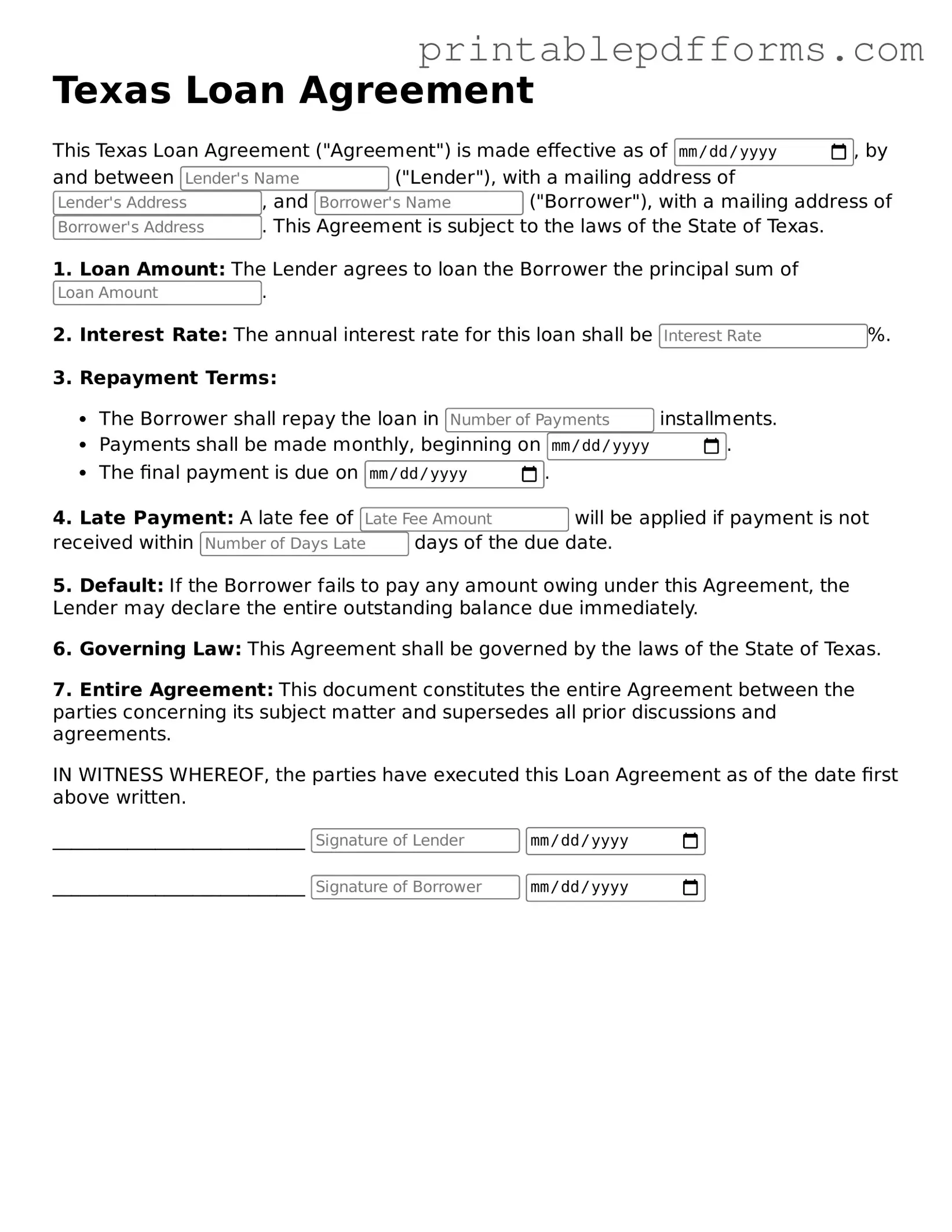Texas Loan Agreement Document
A Texas Loan Agreement form is a legal document that outlines the terms and conditions under which a loan is provided between a lender and a borrower. This form serves to protect both parties by clearly detailing repayment terms, interest rates, and any collateral involved. To ensure a smooth lending process, consider filling out the Texas Loan Agreement form by clicking the button below.
Create This Document Online
